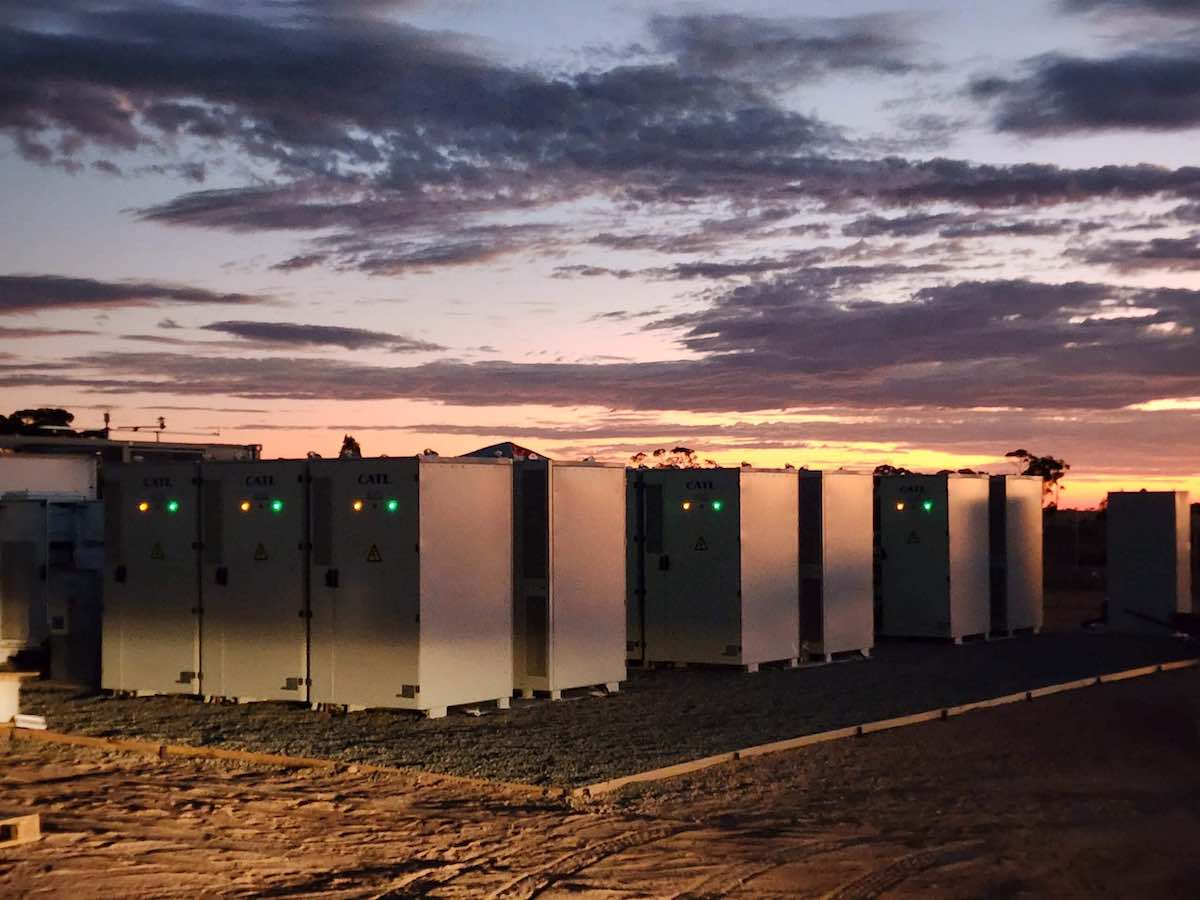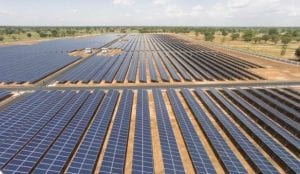Big batteries and small-scale solar were the heroes of Australia’s energy transition in 2023, with PV installed by homes and businesses making up the majority of the record 5.9GW of new renewable energy capacity added to the grid over the course of the year.
The Clean Energy Council’s Clean Energy Australia 2024 report paints a picture of a “very positive” year, despite a slowdown in investment in large-scale renewables, with “a fantastic set of results for rooftop solar and record-breaking figures for investment in utility scale storage.”
But it said the fall in large scale renewables was alarming, with no financial commitments for new big wind projects in 2023, down from six the previous year. However, its data was later disputed, with Andrew Forrest’s Squadron Energy noting it had reached financial close on its Uungala wind project in NSW in December. (See more below).
The CEC said new rooftop solar installation fell just short of a new all-time annual record, but the 3.1GW installed in 2022 was the largest contributor to Australia’s renewables drive for the year.
Rootop solar systems installed by Australian homes and businesses seeking to cut their energy costs and take climate action accounted for 28.5% of all renewables installed for the year, up from 25.8%.
The report also notes that rooftop solar generated an average of 11.2 per cent of Australia’s electricity in 2023, providing more than a tenth of Australia’s total energy for the first time.
In terms of renewables, this makes rooftop solar the second-biggest contributor to the grid, next to large-scale wind power. Across the board, rooftop solar comes in fourth, ahead of gas, but behind wind (13.4%), brown coal (13.4%) and black coal (39.3%).
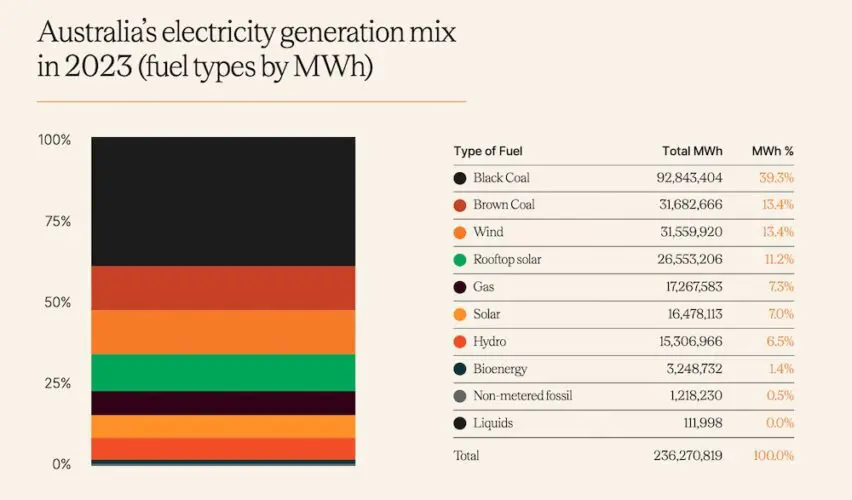
By the end of 2023, around 3.7 million Australian households had rooftop solar PV systems installed, up from roughly 3.4 million at end-of-year 2022, the CEC report says.
The total number of new rooftop solar installations for 2023 was 337,498 up from 315,499 in 2022, and the size of systems being installed also grew, reaching an average of 9.3kW.
Meanwhile, it was a “bumper year” for large-scale energy storage, with 27 large-scale batteries under construction at the end of 2023, totalling approximately 5GW/11GWh.
This, says the report, is a significant increase on the equivalent figures from 2022: 19 batteries under construction totalling approximately 1.4GW/2GWh.
That said, it’s also a fair way off the 9GW the federal government aims to underwrite by 2030 as part of the push to 82 per cent renewables, or the additional 11–14GW/59–69GWh of storage capacity CSIRO has projected will be required by 2030.
Nevertheless, 2023 set a decent pace. According to the CEC report, new investment in large-scale storage passed the two-billion-dollar mark in a quarter for the first time in the second quarter of 2023 – and in the fourth quarter that record was matched.
The result is that 2023 marked the strongest ever year for new financial commitments in the large-scale storage space, at $4.9 billion including hybrid projects with storage elements ($4.7 billion for storage-only projects), compared to $1.9 billion in 2022 – a 157.9% increase.
“Whichever way you look at the figures, it has been a bumper year for large-scale storage,” the CEC report says, with huge projects spread around the National Electricity Market, including in New South Wales, Victoria and Queensland.
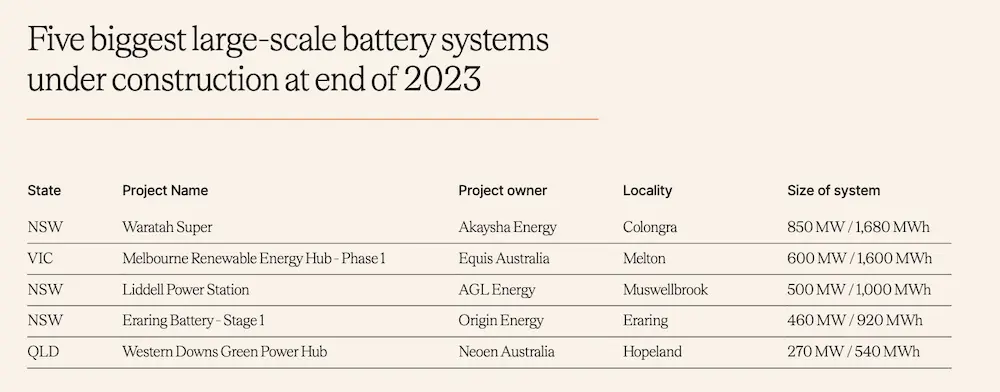
As with rooftop solar, NSW topped the stakes, as it races to replace its outgoing coal power capacity. The state lays claim to the biggest battery system currently under construction – the 850MW/1,680MWh Waratah Super Battery, which began construction in May 2023.
Second-largest big battery in the nation goes to Victoria, with the 600MW/1,600MWh Melbourne Renewable Energy Hub, which was approved by the federal government in October 2023.
The largest utility scale battery storage project commissioned in 2023 was the 150MW/300MWh Riverina Energy Storage System, which completed construction in May 2023 and went live in October.
On the flip-side, the report notes that 2023 saw a slowdown in new financial commitments to utility-scale generation capacity at $1.5 billion, significantly down on $6.5 billion for 2022.
The CEC said none of these were wind projects, and only six new large scale solar projects. However, Squadron Energy said its 414 MW Uungala wind project – the largest in NSW – reached financial close in December 2023, and noted it aims to deliver 14 GW in large scale renewable energy projects by 2030.
“This will deliver one third of the renewable energy required for Australia to meet its 2030 renewable energy target of 82%,” Squadron said in a statement.
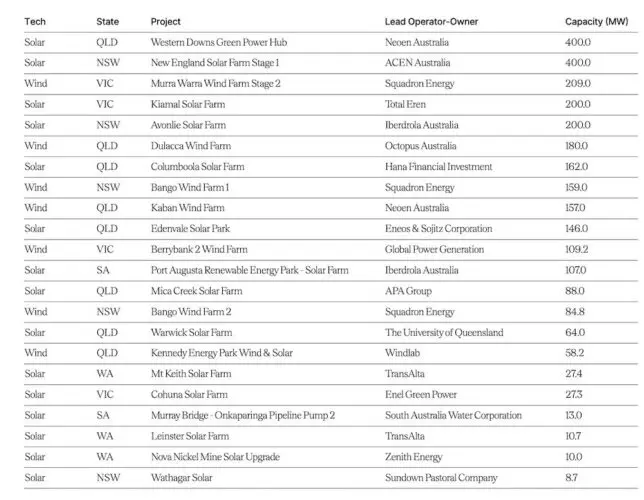
CEC chief executive Kane Thornton said large scale renewables face a “complex and challenging landscape for new investment decisions, which continue to include a constrained grid, slow planning and environmental assessment processes in some jurisdictions, higher costs and tighter markets for equipment and labour.”
The report says the policy environment has also been uncertain, with the large-scale Renewable Energy Target set to wind up at the end of 2030.
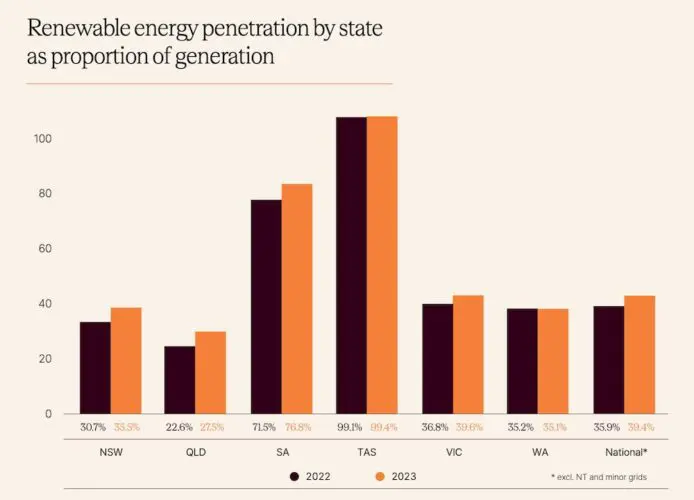
“Australia’s transition to a clean electricity system is closer than ever, and I believe we are now building the critical foundations that will deliver a transformative acceleration in renewables,” Thornton says.
“Now is the time to ride the wave of policy ambition and turn Australia’s huge pipeline of ‘prospective’ projects into ‘built’ projects.”

